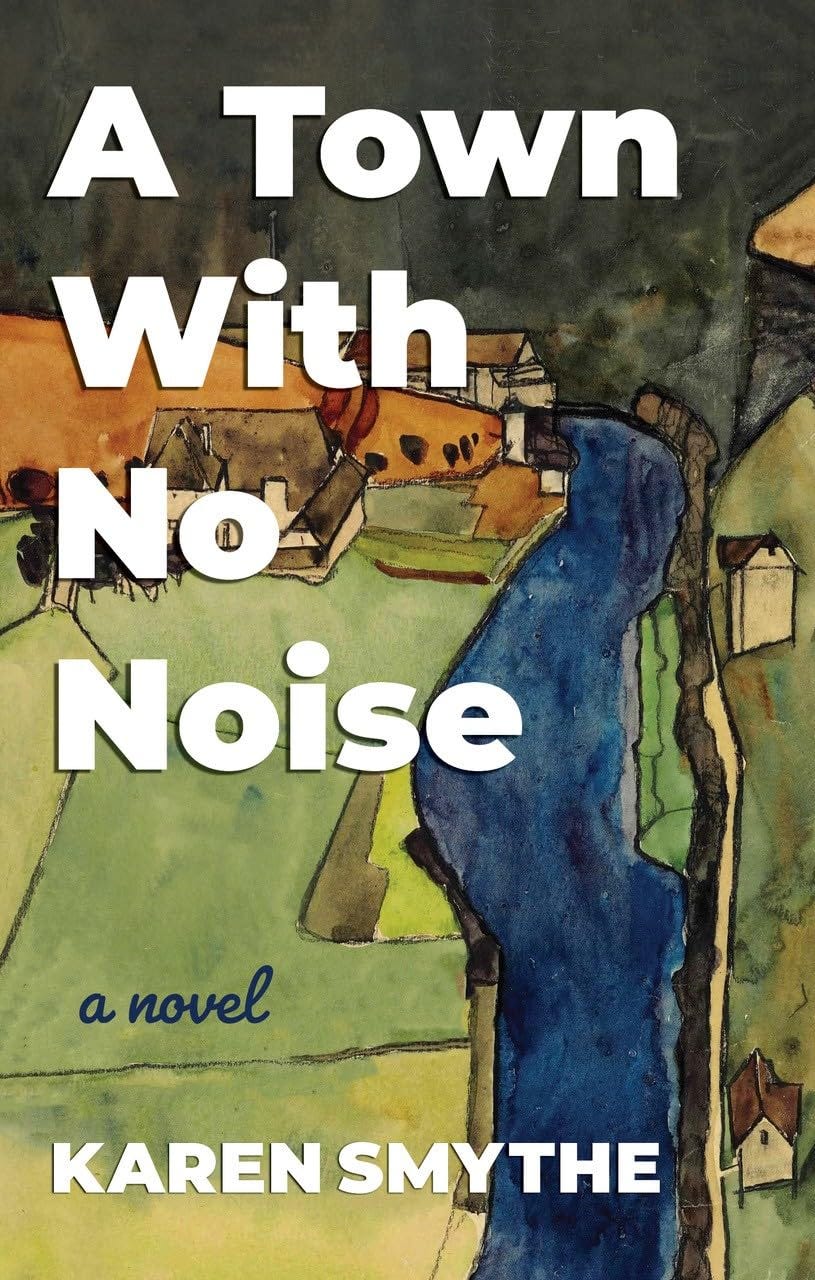A Town With No Noise by Karen Smythe
Reviewed by Ian Colford
Truth is an elusive and hard-won commodity in Karen Smythe’s spellbinding novel, A Town With No Noise. Through her sharply observant narrator, Samara Johansen, Smythe tells a multi-faceted tale filled with shattering revelations and family secrets that leave Samara wondering who she is and how she should live her life.
A Town With No Noise is, admittedly, difficult to summarize. There are multiple characters, story threads, and structural devices that combine to create a complex network of interconnections and timelines. The book begins with Samara and her boyfriend J. driving to Upton Bay, a well-known theatre hot-spot located in the heart of Ontario wine country that during the spring and summer fills up with tourists. The visit has a dual purpose: to see J.’s grandfather and for Samara to gather information on the town for an article she’s writing aimed at promoting tourism.
On its surface, Upton Bay has the appearance of a small-town idyll, with its clean streets, lavishly curated storefronts, and lovingly preserved domestic properties featuring wrap-around porches and manicured lawns. Smythe inserts third-person vignettes about the residents that broaden the perspective for the reader and reveal the character of the town in the accrual of details about people and their pasts. Sam—as an outsider looking in—uncovers a seamy underbelly of exploitation when she visits the brilliantly named Evil Maple Estates winery. The longer Sam stays in Upton Bay, the more questions she has about the town’s character, and about her relationship with J. and his family background.
“A Town With No Noise is compelling from start to finish.”
This personal storyline is one horizontal movement of this novel, and its sociological revelations are another; the third is a vertical deep dive into history, as Sam moves into a role as an investigative writer and researcher into J.’s German family history during WW2 and her own, Norwegian family history in Occupied Norway. Because of her unusual first name, Samara repeatedly faces questions about her own ethnicity (she’s named for her grandmother’s best friend, a Russian Jew). Samara’s grandmother lived under Nazi occupation in a small town in Norway—another town with no noise—and in the second part of the novel, Sam’s mother hands her a box of documents about that life, which will reveal devastating family secrets. Now Sam becomes an archaeologist of the past, both personal and historical, which rises up and effectively changes the direction of her own life.
A Town With No Noise is compelling from start to finish. It’s a remarkable novel about ugly truths obscured by the passage of time and the stories we tell to make life palatable, for ourselves and our loved ones. It’s also a novel that effectively blends fact with fiction, the author making clever use of the historical record, using embedded documents and footnotes to elucidate or expand upon factual elements of the story. Smythe includes a list of resources at the end of her book that indicate the extent of the research behind her novel, as well as a list of questions for book clubs to make use of. There is so much to discuss in A Town with No Noise that individual readers and book clubs alike are sure to find it a fascinating, moving, and unique novel that will change the way they look at history, too.
About the Author
Karen Smythe is the author of the novel This Side of Sad (Goose Lane Editions, 2017), the story collection Stubborn Bones (Polestar/Raincoast, 2001), and the critical study Figuring Grief: Gallant, Munro, and the Poetics of Elegy (McGill-Queen’s U.P., 1992). She lives in Guelph, Ontario.
About the Reviewer
Ian Colford was born, raised, and educated in Halifax. His reviews and stories have appeared in many print and online publications. He is the author of two collections of short fiction and two novels, and is the recipient of the Margaret and John Savage First Book Award for Evidence.
Book Details
Publisher : Palimpsest Press (May 20, 2025)
Language : English
Paperback : 200 pages
ISBN-10 : 1990293921
ISBN-13 : 978-1990293924




